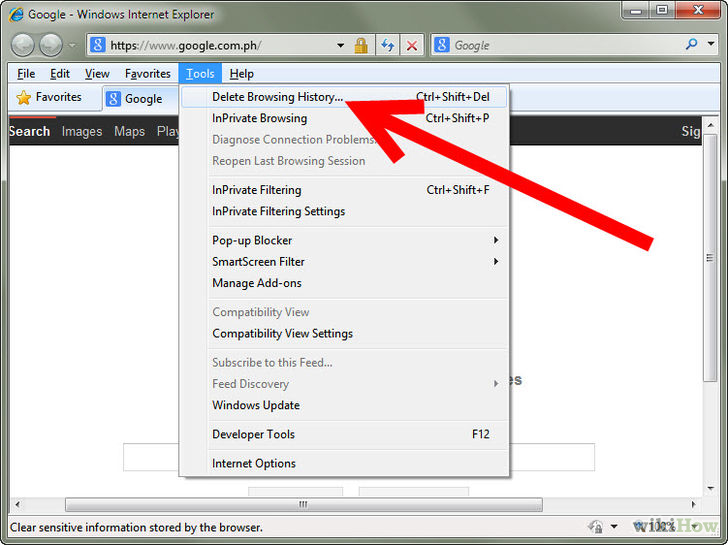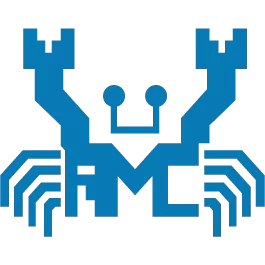- Clear Driver Download For Windows Operating System
- Clear Driver Download For Windows 7
- Clear Driver Download For Windows 7
- Download Icloud For Windows
By Mark Russinovich
Feb 10, 2020 Limits free driver downloads; Allows unsigned (and insecure) driver updates; Downloads drivers after a short period, not instantly; Download: Free, $29.80. Auslogics Driver Updater. Auslogics is another company that creates some of the best applications for Windows. Earlier, we had covered Auslogics tools in our Defragmentation article on. Feb 07, 2021 Once you’ve extracted the tool, you’ll need to open Windows 10 in Safe Mode, then open DDU and select your device type (GPU or Audio) from the drop-down menu.Once you’ve made your selection, click “Clean and restart” for your drivers to be completely uninstalled.
Published: November 25, 2020
Download SDelete(518 KB)
Introduction
The quickest, safest, and fastest way to update old drivers is to use Smart Driver Care – an ultimate driver updating tool for Windows. Using this tool you can not only update outdated drivers but can also take a backup of old drivers. Jul 05, 2017 To uninstall drivers on laptops and desktop is rarely used but when the drivers get into trouble and part of your computer cannot work well, you should remove them and re-install the proper one. The following are the reasons why you should delete the drivers and its components: The driver is outdated but cannot be updated successfully. Nov 25, 2020 Download SDelete (518 KB) Introduction. One feature of Windows NT/2000's (Win2K) C2-compliance is that it implements object reuse protection. This means that when an application allocates file space or virtual memory it is unable to view data that was previously stored in the resources Windows NT/2K allocates for it.
One feature of Windows NT/2000's (Win2K) C2-compliance is that itimplements object reuse protection. This means that when an applicationallocates file space or virtual memory it is unable to view data thatwas previously stored in the resources Windows NT/2K allocates for it.Windows NT zero-fills memory and zeroes the sectors on disk where a fileis placed before it presents either type of resource to an application.However, object reuse does not dictate that the space that a fileoccupies before it is deleted be zeroed. This is because Windows NT/2Kis designed with the assumption that the operating system controlsaccess to system resources. However, when the operating system is notactive it is possible to use raw disk editors and recovery tools to viewand recover data that the operating system has deallocated. Even whenyou encrypt files with Win2K's Encrypting File System (EFS), a file'soriginal unencrypted file data is left on the disk after a new encryptedversion of the file is created.

The only way to ensure that deleted files, as well as files that youencrypt with EFS, are safe from recovery is to use a secure deleteapplication. Secure delete applications overwrite a deleted file'son-disk data using techiques that are shown to make disk dataunrecoverable, even using recovery technology that can read patterns inmagnetic media that reveal weakly deleted files. SDelete (SecureDelete) is such an application. You can use SDelete both to securelydelete existing files, as well as to securely erase any file data thatexists in the unallocated portions of a disk (including files that youhave already deleted or encrypted). SDelete implements the Departmentof Defense clearing and sanitizing standard DOD 5220.22-M, to give youconfidence that once deleted with SDelete, your file data is goneforever. Note that SDelete securely deletes file data, but not filenames located in free disk space.
Using SDelete
SDelete is a command line utility that takes a number of options. Inany given use, it allows you to delete one or more files and/ordirectories, or to cleanse the free space on a logical disk. SDeleteaccepts wild card characters as part of the directory or file specifier.
Usage: sdelete [-p passes] [-r] [-s] [-q] <file or directory>[..]
sdelete [-p passes] [-z|-c [percent free]] <drive letter [..]>sdelete [-p passes] [-z|-c] <physical disk number>
| Parameter | Description |
|---|---|
| -c | Clean free space. Specify an option amount of space to leave free for use by a running system. |
| -p | Specifies number of overwrite passes (default is 1). |
| -r | Remove Read-Only attribute. |
| -s | Recurse subdirectories. |
| -z | Zero free space (good for virtual disk optimization). |
| -nobanner | Do not display the startup banner and copyright message. |
How SDelete Works
Securely deleting a file that has no special attributes is relativelystraight-forward: the secure delete program simply overwrites the filewith the secure delete pattern. What is more tricky is securely deletingWindows NT/2K compressed, encrypted and sparse files, and securelycleansing disk free spaces.
Compressed, encrypted and sparse are managed by NTFS in 16-clusterblocks. If a program writes to an existing portion of such a file NTFSallocates new space on the disk to store the new data and after the newdata has been written, deallocates the clusters previously occupied bythe file. NTFS takes this conservative approach for reasons related todata integrity, and in the case of compressed and sparse files, in casea new allocation is larger than what exists (the new compressed data isbigger than the old compressed data). Thus, overwriting such a file willnot succeed in deleting the file's contents from the disk.
To handle these types of files SDelete relies on the defragmentationAPI. Using the defragmentation API, SDelete can determine preciselywhich clusters on a disk are occupied by data belonging to compressed,sparse and encrypted files. Once SDelete knows which clusters containthe file's data, it can open the disk for raw access and overwrite thoseclusters.
Cleaning free space presents another challenge. Since FAT and NTFSprovide no means for an application to directly address free space,SDelete has one of two options. The first is that it can, like it doesfor compressed, sparse and encrypted files, open the disk for raw accessand overwrite the free space. This approach suffers from a big problem:even if SDelete were coded to be fully capable of calculating the freespace portions of NTFS and FAT drives (something that's not trivial), itwould run the risk of collision with active file operations taking placeon the system. For example, say SDelete determines that a cluster isfree, and just at that moment the file system driver (FAT, NTFS) decidesto allocate the cluster for a file that another application ismodifying. The file system driver writes the new data to the cluster,and then SDelete comes along and overwrites the freshly written data:the file's new data is gone. The problem is even worse if the cluster isallocated for file system metadata since SDelete will corrupt the filesystem's on-disk structures.
The second approach, and the one SDelete takes, is to indirectlyoverwrite free space. First, SDelete allocates the largest file itcan. SDelete does this using non-cached file I/O so that the contentsof the NT file system cache will not be thrown out and replaced withuseless data associated with SDelete's space-hogging file. Becausenon-cached file I/O must be sector (512-byte) aligned, there might besome left over space that isn't allocated for the SDelete file evenwhen SDelete cannot further grow the file. To grab any remaining spaceSDelete next allocates the largest cached file it can. For both ofthese files SDelete performs a secure overwrite, ensuring that all thedisk space that was previously free becomes securely cleansed.
On NTFS drives SDelete's job isn't necessarily through after itallocates and overwrites the two files. SDelete must also fill anyexisting free portions of the NTFS MFT (Master File Table) with filesthat fit within an MFT record. An MFT record is typically 1KB in size,and every file or directory on a disk requires at least one MFT record.Small files are stored entirely within their MFT record, while filesthat don't fit within a record are allocated clusters outside the MFT.All SDelete has to do to take care of the free MFT space is allocatethe largest file it can - when the file occupies all the available spacein an MFT Record NTFS will prevent the file from getting larger, sincethere are no free clusters left on the disk (they are being held by thetwo files SDelete previously allocated). SDelete then repeats theprocess. When SDelete can no longer even create a new file, it knowsthat all the previously free records in the MFT have been completelyfilled with securely overwritten files.

To overwrite file names of a file that you delete, SDelete renames thefile 26 times, each time replacing each character of the file's namewith a successive alphabetic character. For instance, the first renameof 'foo.txt' would be to 'AAA.AAA'.
The reason that SDelete does not securely delete file names whencleaning disk free space is that deleting them would require directmanipulation of directory structures. Directory structures can have freespace containing deleted file names, but the free directory space is notavailable for allocation to other files. Hence, SDelete has no way ofallocating this free space so that it can securely overwrite it.
Clear Driver Download For Windows Operating System
Download SDelete(518 KB)
Runs on:
- Client: Windows Vista and higher
- Server: Windows Server 2008 and higher
- Nano Server: 2016 and higher
Before you begin
Driver updates for Windows 10, along with many devices, such as network adapters, monitors, printers, and video cards, are automatically downloaded and installed through Windows Update. You probably already have the most recent drivers, but if you'd like to manually update or reinstall a driver, here's how:
Clear Driver Download For Windows 7
Update the device driver
In the search box on the taskbar, enter device manager, then select Device Manager.
Select a category to see names of devices, then right-click (or press and hold) the one you’d like to update.
Select Search automatically for updated driver software.
Select Update Driver.
If Windows doesn't find a new driver, you can try looking for one on the device manufacturer's website and follow their instructions.
Reinstall the device driver
Acr lic102 cable drivers. In the search box on the taskbar, enter device manager, then select Device Manager.
Right-click (or press and hold) the name of the device, and select Uninstall.
Restart your PC.
Windows will attempt to reinstall the driver.
More help

Clear Driver Download For Windows 7

Download Icloud For Windows
If you can't see the desktop and instead see a blue, black, or blank screen, see Troubleshoot blue screen errors or Troubleshoot black or blank screen errors.
Comments are closed.